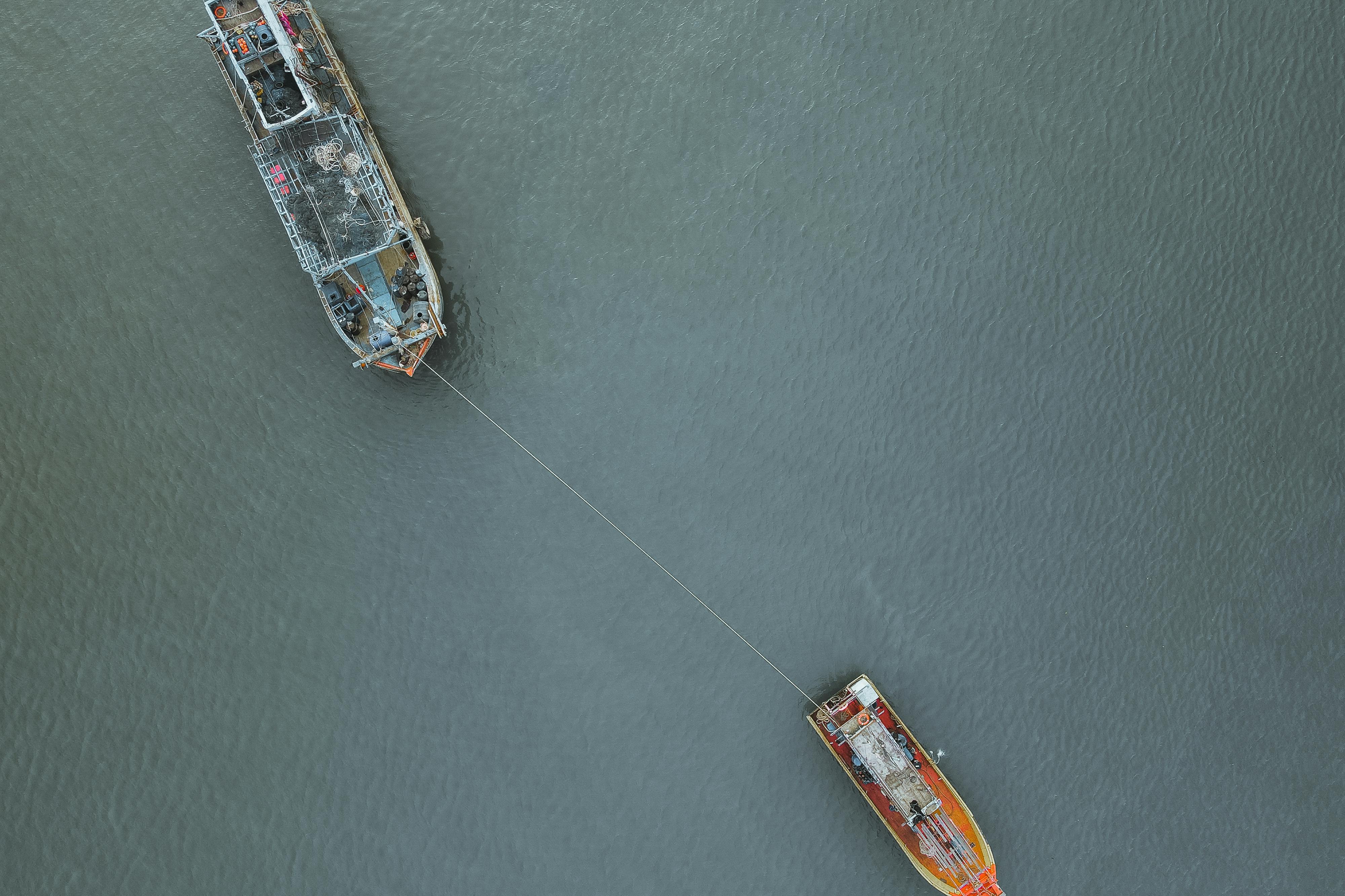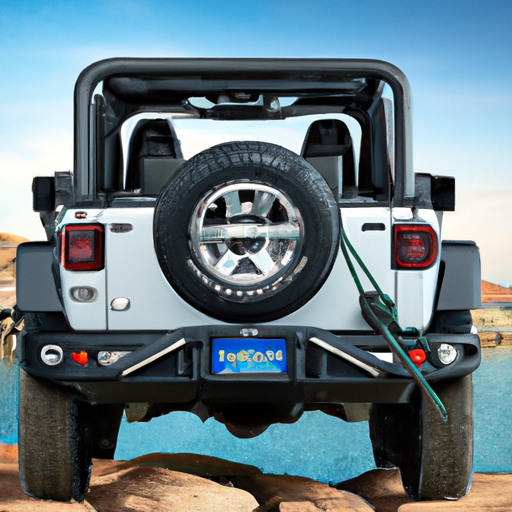Ah, the mighty Jeep Wrangler, beloved by outdoor enthusiasts and adventure seekers alike. With its rugged design and unparalleled off-road capabilities, it’s no wonder why this iconic vehicle holds a special place in the hearts of many. However, one question that often comes to mind is: why is the towing capacity of the Jeep Wrangler so low? In this article, we’ll take a closer look at the factors that contribute to the Wrangler’s towing limitations and explore why this shouldn’t deter you from embracing the freedom and thrill that this remarkable SUV has to offer. So, grab your compass and let’s navigate through the world of Jeep Wranglers!
Weight and Dimensions
Lightweight Construction
The Jeep Wrangler is known for its lightweight construction, which is one of the factors contributing to its relatively low towing capacity. The use of lightweight materials helps improve fuel efficiency and off-road capabilities, but it limits the weight that the vehicle can tow. However, this lightweight construction allows for better maneuverability and agility, making it an ideal choice for off-road adventures.
Short Wheelbase
Another factor that influences the towing capacity of the Jeep Wrangler is its short wheelbase. The short wheelbase, which refers to the distance between the front and rear axles, affects the vehicle’s stability while towing. A shorter wheelbase can result in less stability when towing heavier loads, as there is less distance between the hitch and the rear axle. This can lead to increased swaying or instability, particularly at higher speeds.
Narrow Track Width
The Jeep Wrangler’s narrow track width also plays a role in its lower towing capacity. The track width refers to the distance between the centerlines of the left and right wheels on the same axle. A narrower track width can limit the vehicle’s stability while towing, especially when maneuvering around corners or uneven terrain. It’s important to consider these factors when determining the towing capacity of your Jeep Wrangler.
Compact Size
Finally, the compact size of the Jeep Wrangler contributes to its lower towing capacity. The smaller overall dimensions of the vehicle limit the amount of weight it can safely tow without compromising stability and control. While this may be seen as a limitation for those in need of heavy towing capabilities, it’s important to remember that the Jeep Wrangler is primarily designed for off-road adventures and exploration, where maneuverability and agility are key.
Engine Factors
Power Output
The power output of the Jeep Wrangler’s engine directly affects its towing capacity. The Wrangler is available with different engine options, ranging from more economical four-cylinder engines to more powerful V6 engines. The more powerful the engine, the higher the towing capacity is likely to be. Properly matching your Jeep Wrangler’s engine power to the weight you plan to tow is essential in ensuring a safe and capable towing experience.
Torque
Torque, along with power output, plays a significant role in determining the towing capacity of the Jeep Wrangler. Torque refers to the rotational force an engine produces and is crucial in providing the necessary power to overcome resistance and pull heavy loads. Higher torque generally translates to higher towing capacity, as it enables the engine to generate the force required for towing. Considering the torque specifications of your Jeep Wrangler’s engine is therefore essential when evaluating its towing capabilities.
Cylinder Configuration
The cylinder configuration of the engine affects both power output and torque, and thereby influences the towing capacity of the Jeep Wrangler. The Wrangler is available with both four-cylinder and six-cylinder engine options. Generally, six-cylinder engines deliver higher power and torque compared to four-cylinder engines, which can positively impact towing capacity. It’s important to select a Jeep Wrangler model with the appropriate cylinder configuration for your towing needs.

Transmission
Manual vs Automatic
The type of transmission in your Jeep Wrangler can influence its towing capacity. Automatic transmissions are generally preferred for towing due to their ability to optimize gear shifting based on load and incline. They provide smoother power delivery and are more forgiving when it comes to inexperienced drivers. While manual transmissions can be used, they require more skill and attention to shift properly, especially when towing heavier loads. Automatic transmissions are generally recommended for those who frequently tow with their Jeep Wrangler.
Gear Ratios
The gear ratios in the transmission affect the towing capacity of the Jeep Wrangler. Lower gear ratios allow for higher torque multiplication, which can improve the Wrangler’s ability to tow heavier loads. Additionally, Jeep Wranglers equipped with a lower crawl ratio, an important off-roading feature, may have specially tuned gear ratios that prioritize low-speed control rather than high-speed towing. It’s important to consider the gear ratios when assessing the towing capacity and capabilities of your Jeep Wrangler.
Transmission Cooling
Transmission cooling is essential when towing with a Jeep Wrangler, as it helps regulate the temperature of the transmission fluid, preventing overheating and potential damage. Some Jeep Wrangler models may come equipped with additional transmission cooling features, such as an external transmission cooler or a more robust cooling system. These enhancements can help maintain optimal transmission performance while towing heavy loads or driving in challenging conditions. Considering the transmission cooling capabilities of your Jeep Wrangler is important for a safe and reliable towing experience.
Suspension System
Off-Road Capabilities
The suspension system of the Jeep Wrangler is designed to handle off-road terrain, and this can affect its towing capacity. The off-road capabilities of the Wrangler prioritize articulation and flexibility in order to traverse uneven surfaces and obstacles. While this suspension setup enhances the Wrangler’s ability to tackle off-road trails, it may result in a lower towing capacity compared to vehicles with stiffer suspensions designed specifically for towing. It’s crucial to determine whether the Wrangler’s off-road capabilities align with your towing needs before selecting it as your towing vehicle.
Articulation vs Towing
The balance between articulation and towing capacity is another important consideration when it comes to the suspension system of the Jeep Wrangler. Articulation refers to the suspension’s ability to allow the wheels to move independently, providing maximum traction on uneven terrain. While this is beneficial for off-roading, it can lead to decreased stability when towing heavy loads. If you plan on towing frequently, it’s important to strike a balance between the Jeep Wrangler’s articulation capabilities and its towing capacity to ensure a safe and controlled towing experience.
Engine Bay Constraints
The design of the engine bay can also impact the towing capacity of the Jeep Wrangler. Due to its compact size and off-road-focused design, the Wrangler’s engine bay may have limited space for additional cooling systems or towing-related modifications. This, in turn, can restrict the vehicle’s maximum towing capacity. Additionally, the placement of components within the engine bay can affect weight distribution and stability when towing. It’s important to consider these constraints when evaluating the towing capabilities of your Jeep Wrangler and ensure any modifications or equipment added do not compromise safety or performance.

Towing Package
Optional Equipment
To enhance the towing capabilities of the Jeep Wrangler, manufacturers often offer optional equipment packages specifically designed for towing. These packages may include features such as a higher-capacity cooling system, upgraded suspension components, and increased towing capacity. Investing in a towing package can provide added peace of mind and confidence when towing with your Jeep Wrangler. Consulting your vehicle’s manufacturer or authorized dealerships can help you determine the availability and compatibility of towing packages for your specific model.
Load Leveling Suspension
Load leveling suspension is a valuable feature for those who frequently tow heavy loads with their Jeep Wrangler. This suspension system automatically adjusts the ride height and stiffness to maintain a level vehicle and ensure proper weight distribution while towing. Load leveling suspension helps enhance stability and control, particularly when towing on uneven terrain or encountering crosswinds. Considering the addition of load leveling suspension as part of your towing package can significantly improve the towing experience with your Jeep Wrangler.
Trailer Sway Control
Trailer sway control is a safety feature that helps mitigate potentially dangerous trailer sway while towing. It utilizes sensors and the vehicle’s braking system to detect and correct trailer sway by applying the brakes selectively to individual wheels. This feature can enhance the stability and control of your Jeep Wrangler while towing, particularly in challenging conditions or when encountering sudden crosswinds or changes in road surface. Considering the inclusion of trailer sway control as part of your towing package is an important step in improving safety and confidence while towing.
Trailer Wiring
Proper trailer wiring is crucial when towing with a Jeep Wrangler to ensure safe and reliable operation of trailer lights, brakes, and other electrical components. Jeep Wranglers typically come equipped with a standard trailer wiring harness, but it’s essential to ensure its compatibility with your specific trailer requirements. Additionally, some towing packages may include upgraded wiring systems with enhanced connectivity and compatibility with various trailer configurations. Taking the time to properly install and maintain your Jeep Wrangler’s trailer wiring is essential for a safe and hassle-free towing experience.
Safety Considerations
Stability
Stability is a paramount consideration when towing with a Jeep Wrangler. Due to its compact size, short wheelbase, and off-road-focused suspension, the Wrangler can be more susceptible to swaying or instability when towing heavy loads. It’s important to ensure that the weight of the trailer and its cargo remains within the designated towing capacity of your Jeep Wrangler to maintain stability. Proper weight distribution, utilizing load leveling suspension if available, and exercising caution while driving at higher speeds can enhance stability and control while towing.
Braking Distance
The Jeep Wrangler’s braking distance can be affected when towing, as the added weight of the trailer increases the overall stopping distance. It’s crucial to allow for a greater braking distance and adjust your driving habits accordingly when towing with your Wrangler. Anticipating stops and reducing speeds well in advance can help compensate for the increased braking distance. Additionally, maintaining the vehicle’s braking system in optimal condition and ensuring proper trailer brake functionality are essential for safe and reliable braking performance while towing.
Driver Awareness
Driver awareness is key to ensuring a safe towing experience with your Jeep Wrangler. Towing requires increased attention and vigilance, as the added weight and length of the trailer can affect the vehicle’s handling characteristics. It’s important to be aware of the Wrangler’s reduced maneuverability and take precautions when turning, changing lanes, or maneuvering in tight spaces. Additionally, properly adjusting mirrors, using trailer brake controllers if applicable, and utilizing backup cameras or other visual aids can help enhance driver awareness while towing.
Tow Bar Compatibility
For those considering using a tow bar to tow with their Jeep Wrangler, it’s essential to ensure compatibility between the tow bar and the vehicle. Tow bars are designed for specific weight capacities and towing configurations, and it’s important to select one that aligns with the Wrangler’s towing capacity and specifications. Additionally, proper installation and regular maintenance of the tow bar are crucial for safe and secure towing. Consulting with manufacturers, authorized dealerships, or experienced towing specialists can help ensure proper tow bar compatibility and installation.

Legal Restrictions
Country-Specific Regulations
Different countries may have specific regulations and requirements regarding towing capacity and equipment. It’s essential to familiarize yourself with the towing laws and regulations in the country where you plan to tow with your Jeep Wrangler. These regulations may include maximum towing weights, speed limits, specific trailer equipment requirements or restrictions, and the need for additional licenses or permits. Adhering to the country-specific regulations helps ensure compliance with the law and promotes safe and responsible towing practices.
Towing Capacity Limits
Jeep Wrangler models may have different towing capacity limits based on engine choices, drivetrain configurations, and other factors. It’s important to review the specifications of your specific Jeep Wrangler model to determine its designated maximum towing capacity. Exceeding the vehicle’s towing capacity can compromise safety, stability, and overall performance. Understanding and respecting these limits are crucial for a safe and trouble-free towing experience with your Jeep Wrangler.
Tire Load Rating
When towing with a Jeep Wrangler, it’s important to consider the tire load rating, as tires are a critical component in supporting the weight of the vehicle and any trailer being towed. The tire load rating indicates the maximum amount of weight a tire can safely support. Exceeding the load rating can lead to tire failure or compromised handling and braking performance. Ensuring that your Jeep Wrangler’s tires, as well as the trailer’s tires, meet the necessary load rating requirements is essential for a safe and reliable towing experience.
Factory Warranty
Manufacturer Liability
Jeep Wrangler’s towing capacity is determined and specified by the manufacturer, and exceeding that designated capacity can have implications for the vehicle’s factory warranty. If the towing capacity is exceeded, and a failure or damage occurs as a result, the manufacturer may not be liable for covering repairs under the warranty. It’s important to carefully review the terms and conditions of your Jeep Wrangler’s factory warranty and consult with the manufacturer or authorized dealerships to understand the potential impact of towing beyond the specified limits.
Vehicle Longevity
Towing beyond the recommended capacity of the Jeep Wrangler can place additional stress on the engine, transmission, suspension, and other crucial components. This can potentially shorten the lifespan of these components and lead to premature wear, increased maintenance costs, and reduced overall vehicle longevity. By adhering to the manufacturer’s specified towing capacity, maintaining the vehicle according to recommended maintenance schedules, and avoiding excessive towing loads, you can help promote the long-term reliability and lifespan of your Jeep Wrangler.
Towing Beyond Limits
Towing beyond the specified limits of your Jeep Wrangler can have various consequences, including increased strain on the engine, transmission, and brakes, reduced stability and control, and potential safety hazards. Additionally, towing beyond the specified limits may also void your vehicle’s factory warranty, leaving you responsible for any repairs or damages that may occur. It’s crucial to acknowledge the limitations set by the manufacturer and prioritize your safety and the longevity of your Jeep Wrangler by adhering to the designated towing capacity.

Aftermarket Modifications
Performance Enhancements
Aftermarket modifications, such as engine upgrades or performance enhancements, can potentially improve the towing capabilities of the Jeep Wrangler. These modifications can provide additional power, torque, and stability, thereby increasing the vehicle’s towing capacity. However, it’s important to note that any modifications made to the vehicle can potentially void its factory warranty. It’s crucial to carefully consider the impact of aftermarket modifications, consult with reputable mechanics or automotive specialists, and thoroughly evaluate the risks and benefits when it comes to enhancing the towing capabilities of your Jeep Wrangler.
Towing Upgrades
Aftermarket towing upgrades, such as upgraded hitches, towing mirrors, or braking systems, can enhance the towing experience and safety of your Jeep Wrangler. These upgrades are specifically designed to improve the vehicle’s towing capabilities and ensure proper weight distribution, braking performance, and visual awareness while towing. However, it’s important to ensure that any aftermarket towing upgrades are compatible and properly installed according to the manufacturer’s guidelines. Consulting with experienced towing specialists or authorized dealerships can help you select and install the appropriate towing upgrades for your Jeep Wrangler.
Warranty Voiding
It’s essential to consider that modifications made to your Jeep Wrangler, whether performance enhancements or towing upgrades, can potentially void the vehicle’s factory warranty. If aftermarket modifications are installed and are found to be the cause of a failure or damage to the vehicle, the manufacturer may not cover repairs under the warranty. Carefully reviewing your vehicle’s warranty and consulting with the manufacturer or authorized dealerships can help you understand the impact of aftermarket modifications on the warranty coverage and make an informed decision regarding towing upgrades for your Jeep Wrangler.
In conclusion, the towing capacity of the Jeep Wrangler is influenced by various factors, including weight and dimensions, engine factors, transmission, suspension system, towing package, safety considerations, legal restrictions, factory warranty, and aftermarket modifications. Understanding these factors and their impact on your Jeep Wrangler’s towing capabilities is crucial for a safe and successful towing experience. By adhering to the manufacturer’s specifications, considering optional towing packages, adhering to legal regulations, and being mindful of safety considerations, you can optimize the towing capabilities of your Jeep Wrangler and enjoy your towing adventures with confidence.
